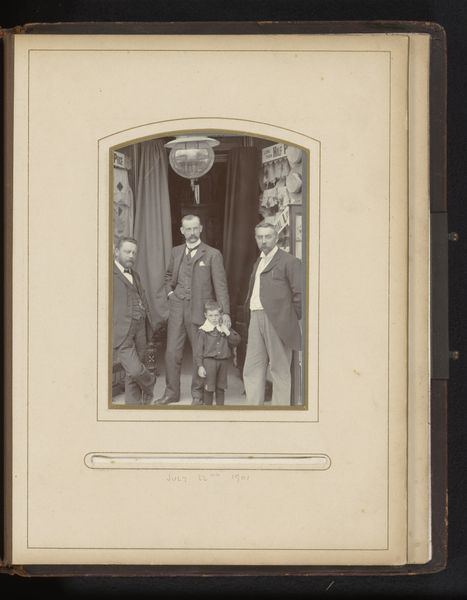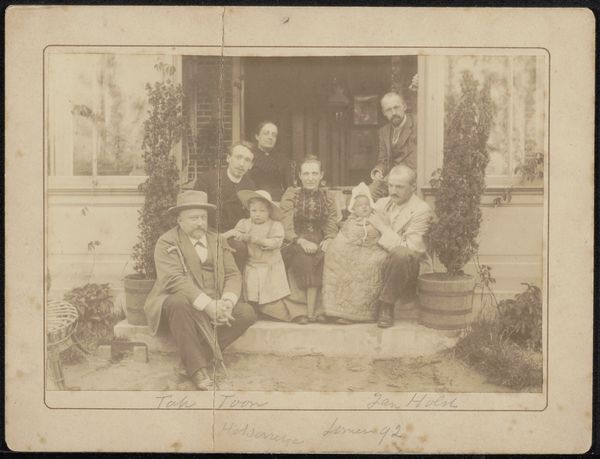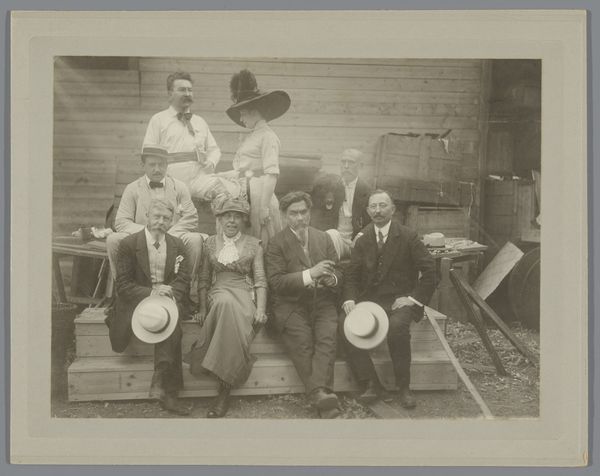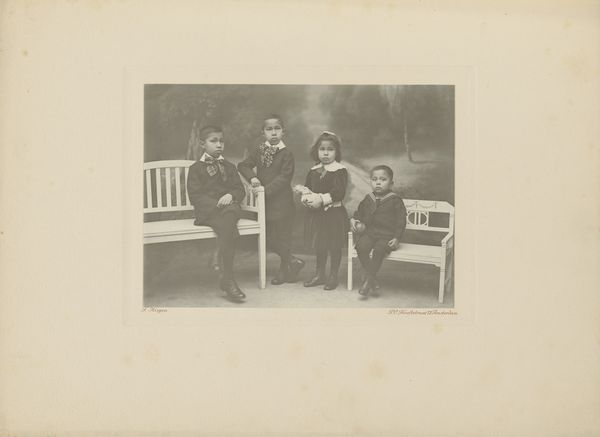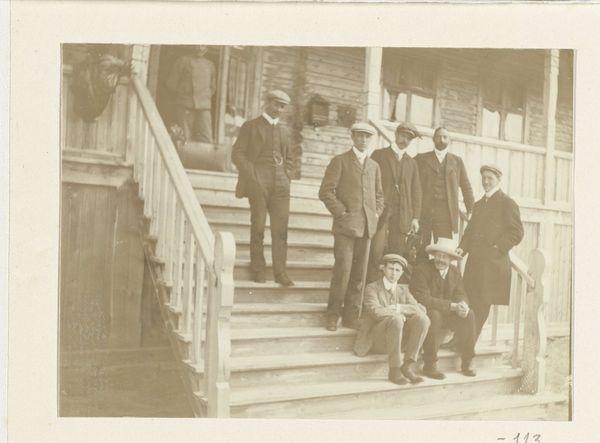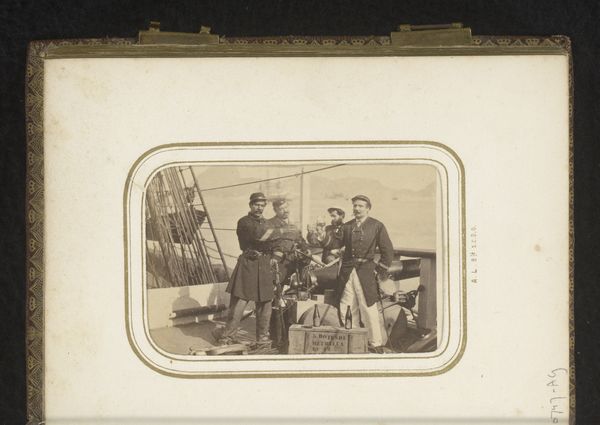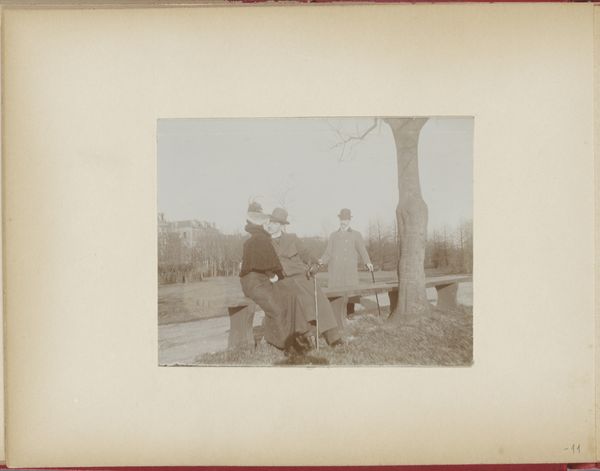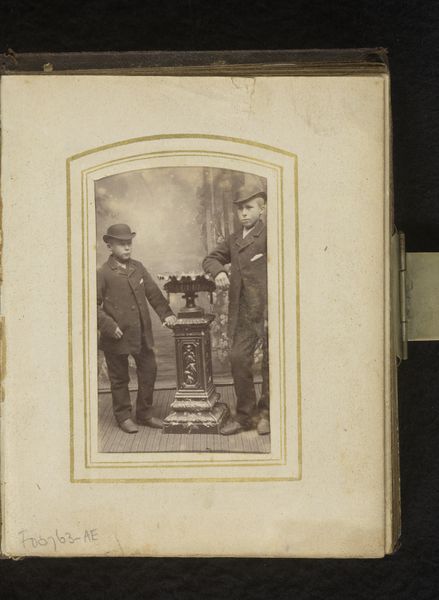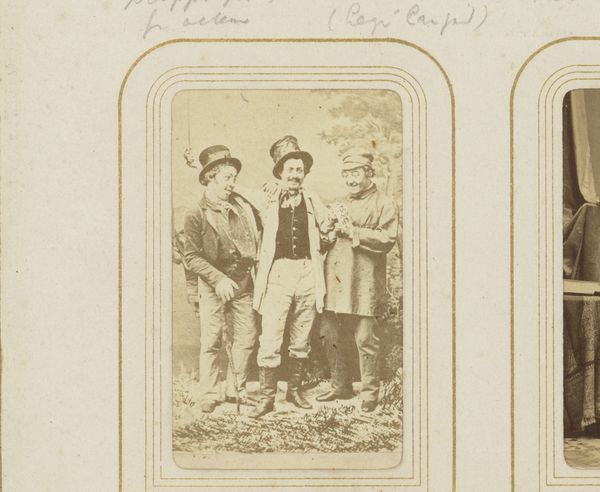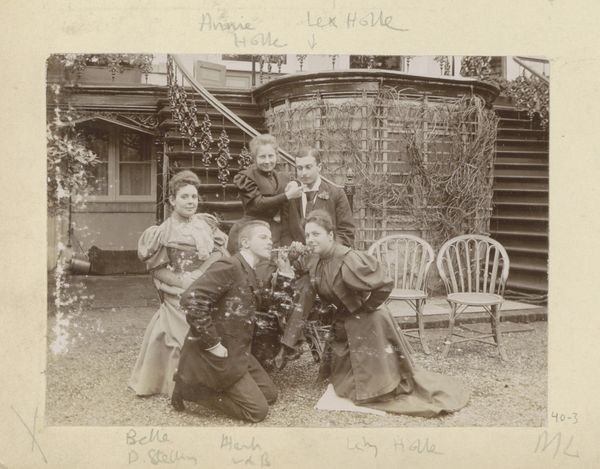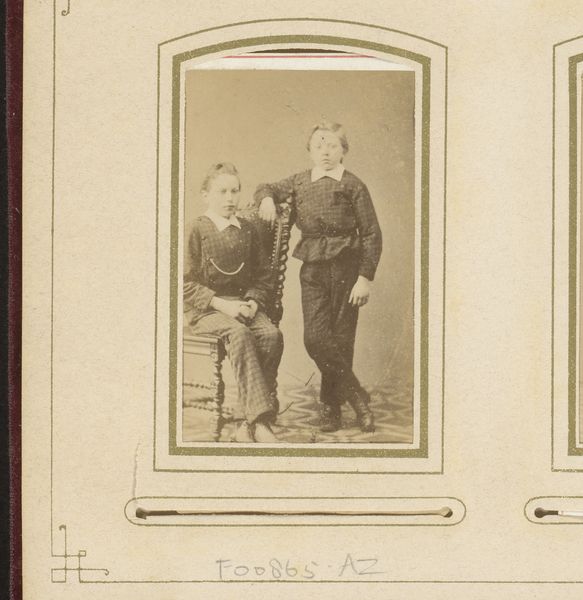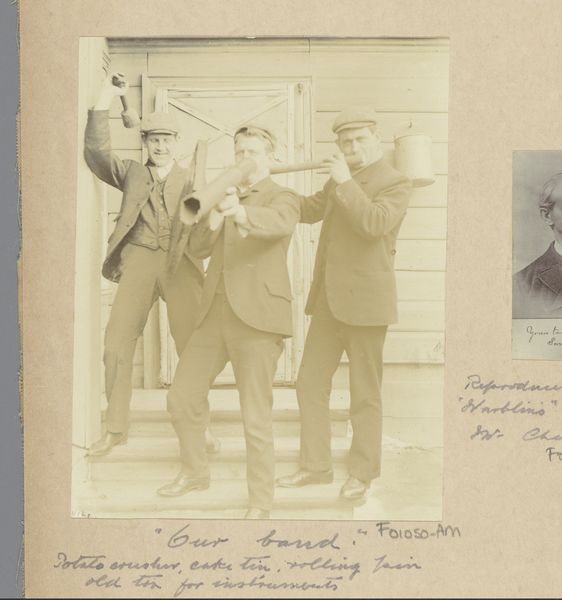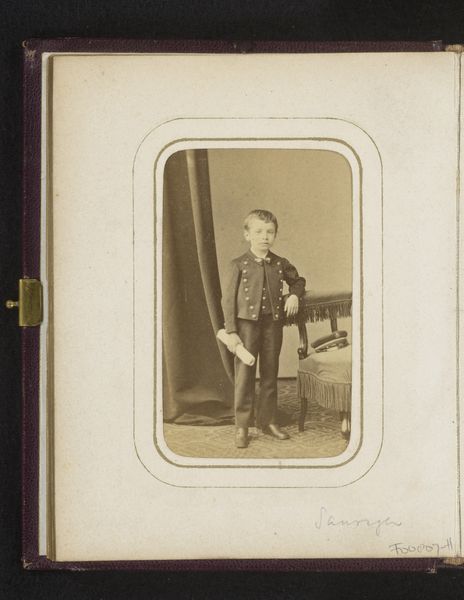![[Hermine, Alfons and Eugen Antoine and Mathias Häusermann on a fallen tree] by Franz Antoine](/_next/image?url=https%3A%2F%2Fd2w8kbdekdi1gv.cloudfront.net%2FeyJidWNrZXQiOiAiYXJ0ZXJhLWltYWdlcy1idWNrZXQiLCAia2V5IjogImFydHdvcmtzLzk5NWZkYzgwLWMwNmQtNGIwMy1hOTU5LTUyNThiZTI1OTAzOC85OTVmZGM4MC1jMDZkLTRiMDMtYTk1OS01MjU4YmUyNTkwMzhfZnVsbC5qcGciLCAiZWRpdHMiOiB7InJlc2l6ZSI6IHsid2lkdGgiOiAxOTIwLCAiaGVpZ2h0IjogMTkyMCwgImZpdCI6ICJpbnNpZGUifX19&w=3840&q=75)
[Hermine, Alfons and Eugen Antoine and Mathias Häusermann on a fallen tree] 1850s - 1860s
0:00
0:00
Dimensions: 18.6 x 23.3 cm. (7 5/16 x 9 3/16 in.)
Copyright: Public Domain
Editor: Here we have a daguerreotype from the 1850s or 60s titled "[Hermine, Alfons and Eugen Antoine and Mathias Häusermann on a fallen tree]". It's by Franz Antoine, and currently held at the Met. There’s a stillness to this group portrait that I find quite compelling, like a tableau vivant frozen in time. What story do you think this image is trying to tell us? Curator: That’s a wonderful way to put it, the feel of a living tableau. To me, this image speaks volumes about the performative nature of family and social class in the mid-19th century. The formal attire, the carefully posed arrangement on the fallen tree, the distinct gaze each person directs… Editor: Performative, how so? Curator: Well, consider the social context. Photography was still relatively new, expensive. Having a portrait taken was a statement of status. And within the image itself, look at the subtle power dynamics. The man stands above and apart, the children arranged according to an unspoken hierarchy. It’s a construction, a curated representation of family, reflecting societal ideals and power structures of the time. Where does your eye travel in the picture and how does that guide you through that space and the image? Editor: I'm drawn to the youngest child seated on the log. He appears…disconnected from the others, less posed maybe. Curator: Precisely! And how might that divergence challenge or confirm your initial thoughts? Perhaps even open the door to understanding childhood and its representation in historical photography more generally. It is really fascinating isn’t it? Editor: I never considered the power dynamics at play in something as simple as a family portrait. It's interesting how even back then, photographs were carefully constructed to project a certain image to the world. Curator: Absolutely. It invites us to consider what these carefully constructed images conceal and reveal about their subjects. It allows us to understand the biases or norms we still repeat now. Editor: I’ll definitely look at these historical portraits differently now!
Comments
No comments
Be the first to comment and join the conversation on the ultimate creative platform.
